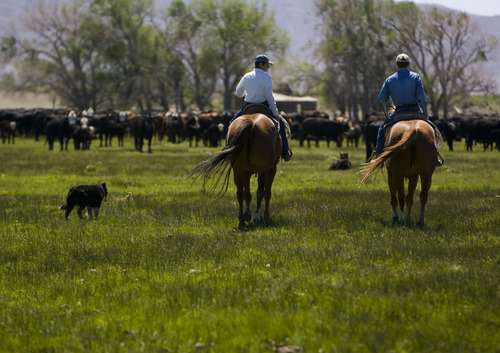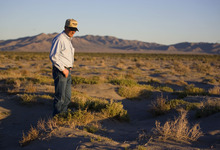This is an archived article that was published on sltrib.com in 2012, and information in the article may be outdated. It is provided only for personal research purposes and may not be reprinted.
In the war over water in the arid Great Basin, Las Vegas looks to have won another major battle over Snake Valley ranchers and others.
In a final Environmental Impact Statement released Friday, the federal Bureau of Land Management appears poised to grant the Southern Nevada Water Authority (SNWA) rights of way that would allow the pumping of ground water from four eastern Nevada valleys for transport via pipeline to Las Vegas.
The project carries a $15.5 billion price tag.
The final EIS, however, appears not to support groundwater pumping from Snake Valley along the Utah-Nevada line. Still, critics say drilling in adjacent drainages will draw down the aquifer beneath Snake Valley. And the BLM document does not preclude SNWA from applying for Snake Valley water at a future date.
The BLM will make known its formal "record of decision" on the matter in October.
Members of the Great Basin Water Network, who have been fighting against the water transfer, conceded Friday the writing is on the wall for a BLM approval. But they vowed the water war isn't over and criticized the BLM's environmental analysis as a "capitulation to the Southern Nevada Water Authority's water grab."
Utah environmental activist Steve Erickson warned that pumping groundwater in the eastern Great Basin would have a significant negative impact on wildlife and ranchers.
"We likely will see litigation over a number of aspects of the final EIS from a number of parties," he said Friday.
The Las Vegas offices of SNWA were closed Friday. No one answered the weekend media hot line.
Utah Gov. Gary Herbert's Office had no comment Friday.
In March, Nevada State Engineer Jason King granted SNWA the right to pump 84,000 acre feet of water annually from four valleys — Spring, Cave, Dry Lake and Delmar — in the eastern reaches of the Great Basin. The Las Vegas-based water authority had originally sought 124,000 acre feet.
King did not grant rights for Snake Valley water.
The BLM's final EIS similarly looks ready to grant SNWA rights of way across federal land in those four valleys and would allow the project to move forward.
The EIS outlines construction of 263 miles of water pipeline, 230 miles of overhead power lines, six electrical substations, two pumping stations, a 40 million gallon storage reservoir and a 165 million gallon water treatment facility.
The project ultimately will mean 37 billion gallons of groundwater will be pumped from eastern Nevada valleys to Las Vegas per year, according to critics.
Snake Valley rancher Cecil Garland said Friday that all the hydrologic data show that groundwater in Spring Valley, Nev., which is 1,000 feet higher than Snake Valley, flows into the Utah aquifer.
"In a word, it means extinction. It's just a matter of time before the plants and animals that depend on the springs [in Snake Valley] die," he said of the pump-and-pipe proposal. "It will have a dramatic and disastrous effect on the Great Basin."
Water tables in Snake Valley are already declining due to dry weather and the addition of several wells in the area, Garland said.
"What they are doing is a dangerous thing," he said. "Once you find out you are over-pumping, the aquifer could take 200 years to restore itself.
SNWA appears as if it's planning on Snake Valley water, said Rob Mrowka of the Tucson-based Center for Biological Diversity.
Despite the fact that the Nevada engineer approved water rights of 84,000 acre feet, he said, the BLM is set to approve a pipeline capable of carrying 117,000 acre feet
"The difference would come from Snake Valley," he said.
Read the final Environmental Impact Statement







